Physcia atrostriata
| Spore | Ascus |
Thallus |
Lichen Index |
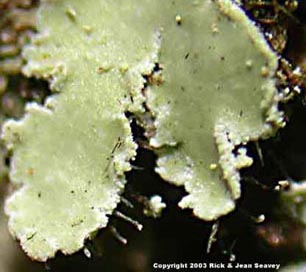
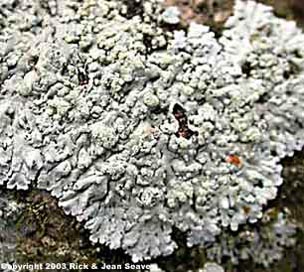
The upper surface showing the eroded margins with soredia beginning to form. Rhizines can be seen projecting from the lower surface of the lobe to the left.
In this species granular patches of soredia tend to form in the sinuses of the lobes. Frequently they become so enlarged it is difficult to tell if they are marginal or laminal, a defining trait of P. atrostriata.
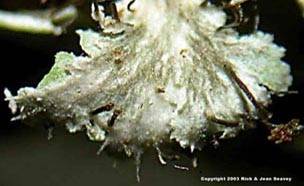
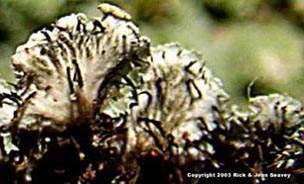
The easiest way to identify this lichen is to look at the lower surface of the lobe tips. If you have P. atrostriata, you should see blackish or grayish lines running to the tip.
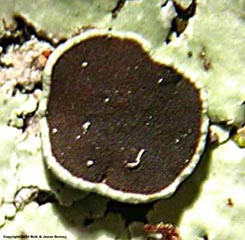
Apothecia are not commonly produced by this species. In fact most of the several species of Physcia in Subtropical Florida lack or infrequently produce them. Perhaps, at least in our area, soredia production and dissemination is a more reliable method of reproduction than spore production. Considering the odds against spore dispersal into a location containing not only the exact conditions necessary for its reproduction and survival, but also those of the correct algae, it can be seen that a "back up" vegetative method of reproduction would be beneficial.